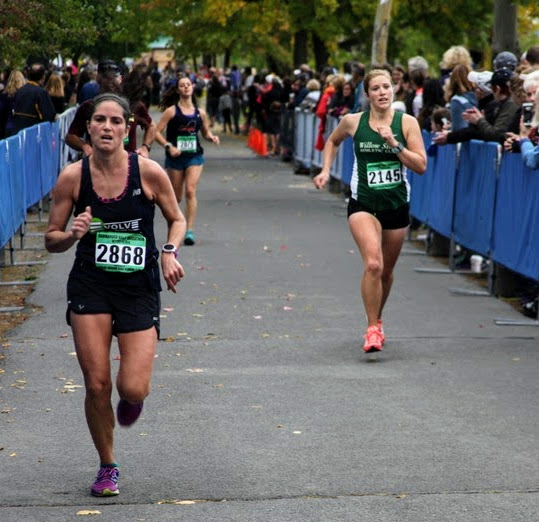“I have been running for a few years after taking a 15+ year hiatus from the sport. About six months ago, I decided that I wanted to run a half marathon but knew that I needed some assistance to keep moving towards that goal. I found Shelly through an online search and I couldn’t be happier about my decision to contact her. At first, I was a little apprehensive at contacting Shelly… after all… how effective is online coaching?! I can tell you from my personal experience that it is absolutely fantastic!
When we first talked, Shelly and I discussed the training methods I’d used before, what her philosophy on training was, what my goals were and how she thought we could get there. We hit it off right from the start. One of the great things I liked about Shelly was that her goal is to get her athletes to the starting line in the best fitness possible, which means making sure you’re giving your body the time it needs to rest after putting in those hard workouts. I knew too many fellow runners who pushed their bodies to the point of injury and ended up missing out on their goal events due to it.
Shelly uses a combination of training tools including the Final Surge platform, which is a great way to share workouts, comments about the workouts, what you’re feeling, etc. She also can be easily reached via phone, email and text messages to talk about workouts, any issues/injuries, and just about anything else that’s going on. I think at times she’s part psychologist when it comes to running.
In the six months since contacting Shelly, I’ve gone from run/walking 5ks to running my first 10k and my first half marathon! Throughout the spring and summer, she consistently worked with me in evaluating my fitness, training progress and goals to adapt my training plans to meet my goal of running a half marathon in the fall. I’m excited to see my results next year after another six months of training with Shelly!”
1st Half Marathon: 2:30:42 E-Race Cancer HM 2018
Sarah put into words so well the way in which I strive to guide runners. In her testimonial for my website she described our partnership these past 6 months. I have really appreciated her honesty, devotion, and desire to learn. We exchanged articles and portions of running literature in order to gain a better understanding of training and the body. Common runner concerns were answered with a thorough phone call or typed out text. We also shared in the delight of a finished half marathon at her desired pace. It has been such a great partnership. I am thankful she gave me a chance to be apart of her journey.
I love running and want others to be impacted by its many virtues. I work with only a handful of runners, cultivating a quality partnership. I make it a priority to be easily accessible. If you or your friend want to take your running experience to a new level, contact me. I am right here.
SOLUTION
Sarah works with me through Weekly Training Guidance. It has been a very effective partnership.

















